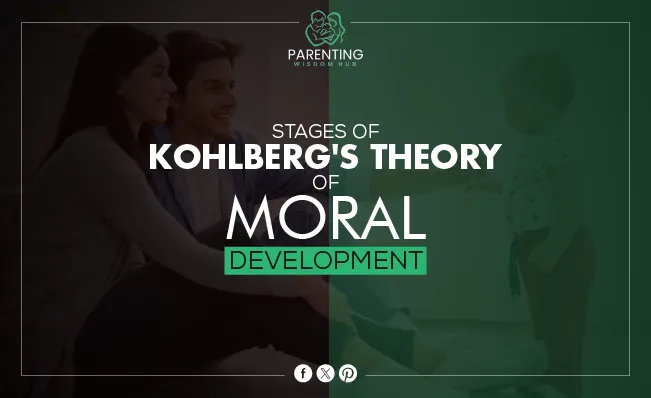Introduction
What does it mean to have morals? How do we learn what is right and wrong? Philosophers and scientists have been interested in these questions for hundreds of years. It is important to understand moral development because it affects how people make moral choices, connect with others, and contribute to society.
This blog article will examine Lawrence Kohlberg’s moral development hypothesis, which explains how people’s morality evolves. By the end of this article, you will comprehend Kohlberg’s three levels and six phases of moral growth and its consequences for education, parenting, and society.
Read more about the stages of early childhood development.
Background of Kohlberg’s Theory
The famous American psychologist Lawrence Kohlberg was born in 1927. He is famous for his studies on moral development and his influential theory on moral reasoning. Kohlberg earned his Ph.D. in psychology at Chicago. He was influenced by Swiss psychologist Jean Piaget’s cognitive development theories. Since Piaget studied how children develop logical thinking, Kohlberg studied how moral reasoning evolves.
Stages of Kohlberg’s Theory of Moral Development
Pre-Conventional Level
Stage 1: Obedience and Punishment Orientation
At this early stage, moral reasoning is mostly based on how acts affect other people. For kids, rules are set in stone, and they know they have to follow them to escape getting in trouble. Their only idea of right and wrong is whether they will get caught and get in trouble.
Example Scenario: Someone told a child not to draw on the walls again after getting in trouble for it the last time they did it. The desire to avoid penalties is more important than anything else.
Stage 2: Individualism and Exchange
These years are when kids start to understand that everyone has different wants and needs. Their acts start to make sense to them because they can help others and further their own goals. Being fair and wanting to help others is a part of this stage, but the person is still focused on themselves.
Example Scenario: A kid might offer to help a friend with their homework in exchange for the friend’s help. It becomes clear what “you scratch my back, I’ll scratch yours” means.
Conventional Level
Stage 3: Good Interpersonal Relationships
This point, moral thinking is based on the need to be seen as a good person by other people. People try their best to live up to what their family, friends, and society expect of them. They think it’s morally important to believe, care about, and be loyal to other people.
Example Scenario: Teenagers might help at a nearby shelter because they want their friends and neighbors to think well of them. Their actions are affected by their need to be liked and their wish to keep relationships good.
Stage 4: Maintaining Social Order
At this point, people know how important it is to keep society running smoothly. They think laws and rules are important for keeping society in order and should be followed to keep things from getting out of hand. The moral reasoning here is about following the rules, doing what you’re supposed to do, and showing respect for authority.
Example Scenario: Adults do things like pay their taxes and follow the rules at work because they think these things are necessary for society to be stable and work. They know that the purpose of rules is to keep things in order and look out for everyone’s well-being.
Post-Conventional Level
Stage 5: Social Contract and Individual Rights
At this point, people begin to see rules and laws as adaptable tools that can be altered if they are no longer useful to the people. They believe in values like freedom, fairness, and equality, and they know that different groups may have different ideas about these values.
Example Scenario: Citizen works to change unfair laws, like those that limit free speech, because they think that laws should protect people’s rights and the common good. They think of the law as an agreement that should change over time to better serve people.
Stage 6: Universal Principles
The last step is to follow moral rules that apply to all people. At this point, people make moral choices based on general ethical ideals like fairness, integrity, and equality, along with abstract reasoning. They are ready to break the law if it goes against these beliefs.
Example Scenario: An activist works against trafficking in people not because it’s against the law but because it hurts people’s rights and sense of worth. They follow universal morals that go beyond specific social rules and are ready to face legal consequences to support these morals.
By understanding these steps, you can see how moral reasoning changes from a simple, self-centered approach to a complex, moral one. It also shows how important it is to think about the situation and reasons behind people’s moral choices.
Drawbacks of Kohlberg’s Theory of Moral Development
Kohlberg’s theory of moral development has helped us understand moral thinking in a lot of ways, but it has some problems and could be better. Scholars and practitioners have pointed out a number of problems with the theory that show where it may fall short.
Cultural Bias
Cultural prejudice is a key criticism of Kohlberg’s theory. The theory’s universality is questioned because it was established with Western male participants. Critics say moral reasoning varies widely between civilizations. For instance, collectivist civilizations may value society and relationships over individual rights, which may result in moral reasoning processes that Kohlberg’s stages cannot represent.
Gender Bias
Issues include Kohlberg’s gender bias research. According to psychologists like Carol Gilligan, Kohlberg’s theory didn’t account for gender differences in morality. Gilligan says Kohlberg’s theory implies men value justice and laws, whereas women value compassion and connections. Kohlberg’s stages may only partially encompass women’s moral development, leaving room for growth.
Overemphasis on Moral Reasoning
Kohlberg prioritizes moral reasoning over moral behavior. Critics argue that knowing morality does not guarantee moral behavior. Kohlberg’s stages don’t address emotions, societal forces, and environmental elements that affect moral decisions. This gap between moral reasoning and conduct limits the theory’s practicality.
Limited Applicability to Real-Life Situations
The idea has also been challenged for not applying it to complex moral situations. Kohlberg’s stages often use hypothetical circumstances that may not reflect genuine moral decisions’ complexity. Individuals may face contradictory ideals and situational limits that defy moral reasoning stages. This may make the theory less useful for understanding and forecasting moral behavior in daily life.
Static Nature of Stages
Kohlberg’s stages seem linear, implying people travel through them in order. Moral development is typically more fluid in actual life. People may think at different phases depending on the context. This static depiction ignores moral complexity and variety.
Lack of Consideration for Emotional and Intuitive Factors
Finally, Kohlberg’s theory ignores emotions and intuitions in moral decision-making. Recently, moral psychology studies like Jonathan Haidt’s social intuitionist model show that moral judgments are swift, automatic, and passionate. Kohlberg’s rationalist approach needs to explain how humans make moral choices fully.
In conclusion, Kohlberg’s theory of moral growth has helped explain moral reasoning, although it has limitations. Cultural and gender biases, the focus on logic over behavior, limited real-life applicability, static stages, and the ignoring of emotional and intuitive variables suggest a more complex and inclusive approach to moral development.


